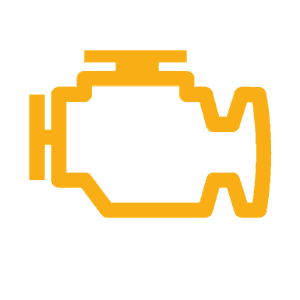
P1174 and P1175 are GM-specific DTCs (Diagnostic Trouble Codes). They indicate fuel bank trim issues on bank 1 and bank 2.
Quick Info
| GM P1174 + P1175 Definition | Fuel Trim Cylinder Balance (Bank 1 or Bank 2) |
| Symptoms | Mild misfire, MIL light |
| Common Causes | Bad O2 sensors, spark plugs, or fuel injectors |
| Breakdown Risk? | Almost Never |
| Repair Cost (Parts) | Usually under $200 |
| Repair Difficulty | Difficult to diagnose |
Definition

P1174: Fuel Trim Cylinder Balance (Bank 1)
P1175: Fuel Trim Cylinder Balance (Bank 2)
Fuel Trim Cylinder Balance
GM P1174 stands for Fuel Trim Cylinder Balance (Bank 1). These codes are set by the engine control unit (ECU) when a difference in the fuel-air mixture between cylinders of Bank 1 or 2 is detected by their respective oxygen sensors.
P1175 means the same exact thing as P1174, just for the cylinder head containing the second cylinder.
Bank 1 or Bank 2
Bank one and bank two refer to a bank of cylinders. Bank one is almost always the cylinder head a little bit closer to the engine’s front (accessory side). A quick Google image search can help you verify your vehicle’s engine.
Inline engines only have one bank of cylinders, which means they’re not capable of getting P1175, so you don’t need to concern yourself with which side of the engine the code is on.
Symptoms
In most cases, there will be no noticeable symptoms associated with these codes other than an illuminated check engine light. However, reduced fuel efficiency and/or engine power reduction could be present.
Causes
The following are the most common causes of GM P1174 and P1175:
- Faulty or contaminated oxygen sensors
- Fuel injectors that are leaking or clogged
- Incorrect or worn spark plugs, plug wires (if equipped), and coil packs
- Vacuum leaks
- Intake manifold leaks
- Defective or dirty mass airflow (MAF) sensor
- Dirty or failed exhaust gas recirculation (EGR) valve
Diagnosis

Diagnosing P1174 and P1175 can be challenging due to the scope of potential causes. Diagnosing this code will require the use of a diagnostic scanner, an oscilloscope, and other specialized tools to troubleshoot the issue.
Replacing the upstream oxygen sensors or performing a tune-up are the most common fixes for P1174 and P1175.
Look at the Other Codes and TSB’s
If there are other codes stored in your vehicle’s memory, they can give valuable insight and help with diagnosing P1174 + P1175. For instance, look at the MAF sensor if there’s a MAF code. If there’s a misfire, pull the plug for the cylinder in question and inspect it.
Connect the scanner to the OBD-II port and retrieve all stored trouble codes, freeze frame data, and live data. This information can then be used to pinpoint the source of the problem.
You should also check for technical service bulletins (TSB) related to the specific make and model of the vehicle in question.
Perform a Visual Inspection
Perform a visual inspection of the engine’s components and sensors. You should also check all wiring connections and wire harnesses for any signs of damage or corrosion. Once this has been done, you’ll need to move on to practical things you can do to clear the code.
P1174 and P1175 Together
If you get P1174 and P1175 together, the O2 sensors are likely fine. It’s also not a spark plug issue since they shouldn’t simultaneously go bad on both sides of the engine.
When these codes are together, they’re most likely caused by a vacuum leak or a dirty MAF.
Common GM P1174 + P1175 Fixes
The easiest way to fix these codes is to use a quality scanner to see what’s going on in your engine. The video above shows how to do that.
Here are the most common quick fixes for these codes.
- Replacing the spark plugs
- Replacing the upstream O2 sensor(s)
- Cleaning the fuel injection system
- Cleaning the MAF Sensor
